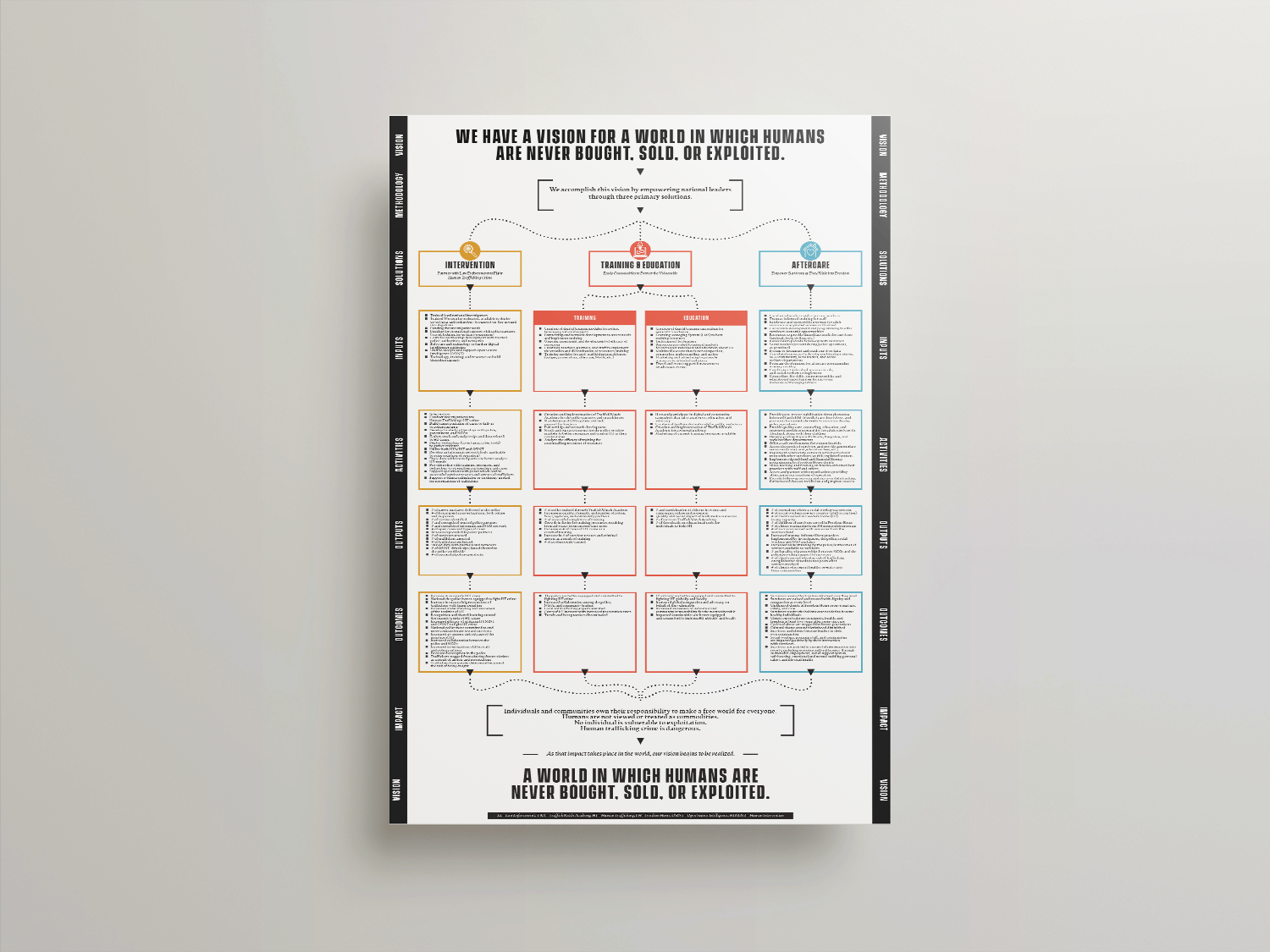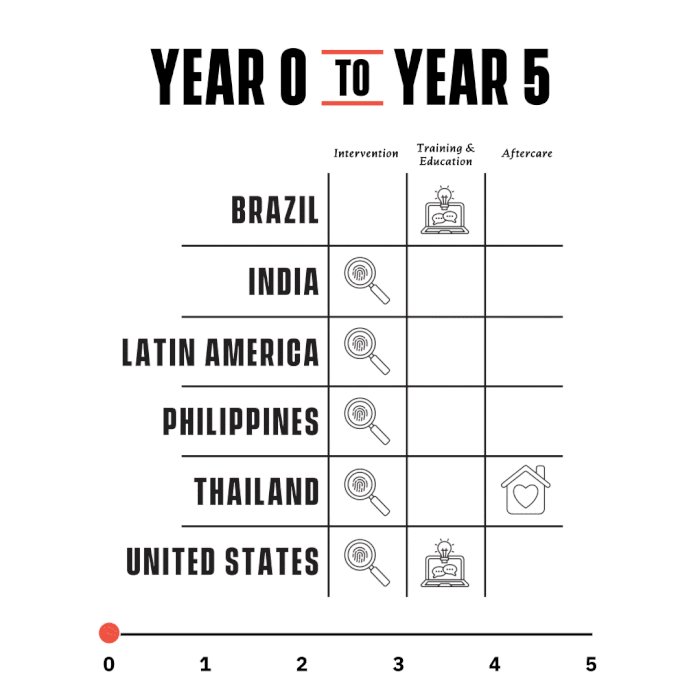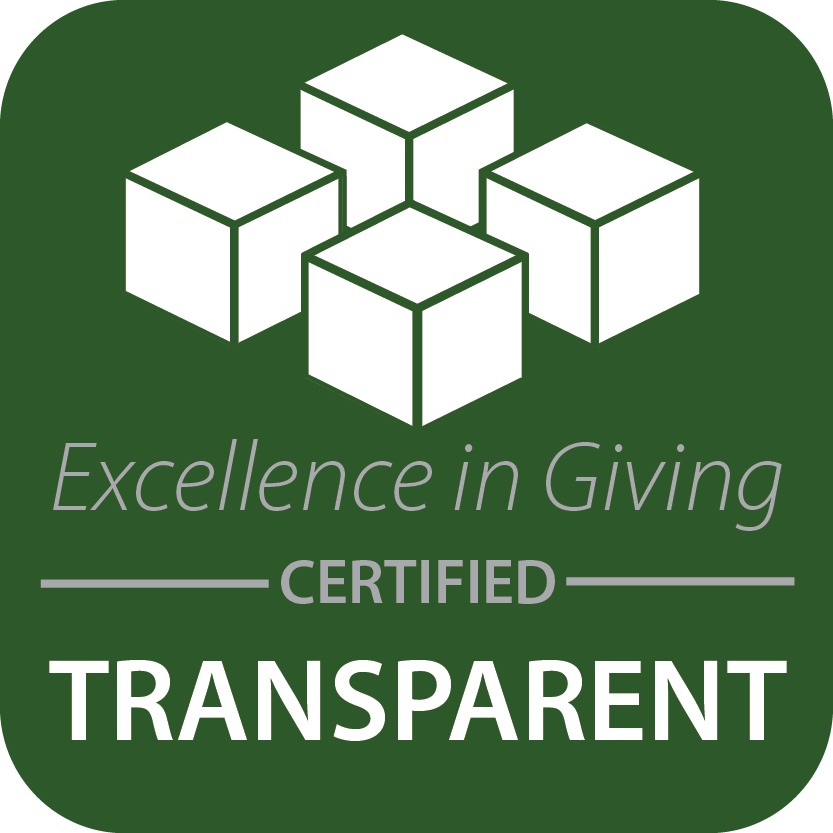A comprehensive description of our contribution to the fight against human trafficking.
The Exodus Road Theory of Change and Five-Year Strategy

Before we begin
The crime of human trafficking is an immensely complex issue that requires solutions with varying nuance in each country in our world. No single person or organization holds the key to ending exploitation, but we believe that our theory of change at The Exodus Road can offer a significant contribution to the larger fight for a free world.
We have a vision for a world in which humans are never bought, sold, or exploited.
We accomplish this vision by empowering
national leaders through three primary solutions.
We accomplish this vision by empowering
national leaders through three primary solutions.
Intervention
Partner with Law Enforcement to Fight Human Trafficking Crime
Inputs
◾ Trained local national investigators
◾ Trained Western investigators, available to deploy covert gear and technology to support on-the-ground investigations
◾ Funding for investigative work
◾ Funding for operational support with police partners (travel, lodging, investigative expenses)
◾ Costs for partnership development with trusted police, authorities, and networks
◾ Software and technology to further digital intelligence gathering
◾ Staff to analyze and support Open Source Intelligence (OSINT)
◾ Technology, training, and resources to build the police capacity
Activities
◾ Intervention
◾ Conduct investigations into Human Trafficking (HT) crime
◾ Build target packages of cases to deliver to police partners
◾ Develop trusted partnerships with police, government, and NGOs
◾ Gather, track and analyze tips and data related to HT crime.
◾ Deploy technology (covert gear, cyber tools) to gather evidence
◾ Utilize both HUMINT and OSINT
◾ Develop an informant network (only applicable to some countries of operation)
◾ Share data with trusted parties to better analyze HT trends
◾ Provide police with training, resources, and technology to strengthen partnerships and cases
◾ Support operations with police which lead to successful survivor rescues and arrests of traffickers
◾ Support evidence submission or testimony needed for prosecutions of traffickers
Outputs
◾# of target packages delivered to the police
◾ # of hours spent in investigations, both online and in-person
◾ # of victims identified
◾ # and strength of trusted police partners
◾ # and strength of informant and NGO network
◾ # of open cases and types of cases
◾ Resources provided to police partners
◾ # of survivors rescued
◾ # of traffickers arrested
◾ # of traffickers sentenced
◾ Shared data with partners and networks
◾ # of OSINT-driven tips/data delivered to the police worldwide
◾ # of successful police operations
Outcomes
◾ Increase in successful HT cases
◾ National the police better equipped to fight HT crime
◾ Increase in successful prosecutions of traffickers with larger penalties
◾ Increased understanding and awareness of the realities of HT
◾ Recognition and shared learning around the current trends of HT crime
◾ Increased efficacy of utilizing HUMINT and OSINT to fight HT crime.
◾ National police more committed to and more compassionate toward survivors
◾ Increased awareness and outrage of the injustice of HT
◾ Increased collaboration between the police and NGOs
◾ Increased investigations skill in staff and police partners
◾ Decreased corruption in the police
◾ Traffickers stopped from abusing future victims as a result of arrests and prosecutions
◾ Traffickers face greater deterrence because of the risk of being caught
Training & Education
Equip Communities to Protect the Vulnerable
Inputs
◾ Creation of digital training modules for police, leveraging national experts
◾ Partnership and network development to assess needs and implement training
◾ Ongoing assessment and development of efficacy of resources
◾ Creatives, teachers, partners, and staff to implement the creation and dissemination of resources/training
◾ Training modules for anti-trafficking practitioners (judges, prosecutors, aftercare, NGOs, etc.)
◾ Creation of digital training curriculum for general US audience
◾ Learning Managing System (LMS) to host training resources
◾ Tech support for learners
◾ Resources provided to general markets for increased awareness and education about HT
◾ Multimedia assets that foster compassion, connection, understanding, and action
◾ Marketing and advertising to promote resources to intended audiences
◾ Travel and event support for awareness or advocacy events
Activities
◾ Creation and implementation of TraffickWatch Academy for the police partners and practitioners
◾ Maintenance of LMS system and tech support for learners
◾ Partnership and network development
◾ Needs and gap assessments for the police or other markets to better recognize and combat HT in their communities
◾ Analyze the efficacy of training for continual improvement of resources
◾ Host and participate in digital and community campaigns that raise awareness, education, and advocacy.
◾ Creation of multimedia materials for public audiences.
◾ Creation and implementation of TraffickWatch Academy for a general audience
◾ Marketing of current training/resources available
Outputs
◾ # of police trained through TraffickWatch Academy
◾ Increase in quality, strength, and number of police, NGO, agencies, and community partners
◾ # of successful completers of training
◾ Growth in desire for training/resources resulting from advocacy from current/past users
◾ Increase in # of cases of HT crime as a result of training
◾ Increase in # of survivor rescues and criminal arrests as a result of training
◾ # of professionals trained
◾ # and participation of citizens in events and campaigns, online and in-person
◾ Quality and social impact of multimedia resources
◾ # of users on TraffickWatch Academy
◾ # of downloads on educational tools for individuals to fight HT
Outcomes
◾ The police are better equipped and committed to fighting HT crime
◾ Increased collaboration among the police, NGOs, and community leaders
◾ Local antitrafficking experts elevated
◾ Cases of HT increase with increased prosecution rates
◾ Trends and best practices disseminated
◾ US citizens are better equipped and committed to fighting HT globally and locally
◾ Increased global compassion and advocacy on behalf of the vulnerable
◾ Increased awareness of individual and community responsibility for the most vulnerable
◾ Impacted communities are better equipped and committed to fighting HT globally and locally
Aftercare
Empower Survivors as They Walk into Freedom
Inputs
◾ Local social workers and crisis care workers
◾ Trauma-informed training for staff
◾ Safehouse and mentorship program for adult survivors or exploited women in Thailand
◾ Curriculum development and programming to offer survivors economic opportunities
◾ Resources to provide immediate needs for survivors (medical, food, clothes, etc.)
◾ Resources to provide follow-up with survivors
◾ Social workers present during police operations, as permitted
◾ System to document and track survivor data
◾ Travel and resources to develop partnerships among NGO community, local leaders, and social welfare departments
◾ Program development for aftercare programming in every country
◾ Fund to meet individual survivor needs, and social workers to implement
◾ Counseling, life skills, entrepreneurship, and educational opportunities for survivors in-house or through partners
Activities
◾ Provide post-rescue stabilization through trauma-informed (and child-friendly) care, interviews, and provision for immediate needs to survivors during police operations
◾ Provide quality care, counseling, education, and entrepreneurship opportunities for adult survivors in Thailand, along with their children
◾ Develop partnerships with NGOs, the police, and social welfare departments
◾ Offer a safe environment for women in crisis.
◾ Assess the needs of survivors and provide appropriate resources (travel, rent, education fees, etc.)
◾ Implement community outreach activities to build trust with other survivors/at risk/exploited women.
◾ Implement stipend fund and financial literacy programming for Freedom Home clients
◾ Share learning and training on trauma-informed best practices with staff and others
◾ Assess and partner with organizations providing aftercare in our countries of operation
◾ Provide follow-up services and survivor data tracking for increased data on recidivism and program success
Outputs
◾ # of operations where a social worker was present
◾ # of social workers in every country (staff or partner)
◾ # of clients served in Freedom Home (FH) in any capacity
◾ # of children of survivors served in Freedom Home
◾ # of clients graduating from FH mentorship program
◾ # of survivors served with resources from the survivor fund
◾ Increased trauma-informed best practices implemented by investigators, the police, social workers and NGO partners
◾ Increased understanding by the police/authorities of services available to survivors
◾ # and quality of partnerships between NGOs and the police providing support to survivors
◾ # of clients served who stay out of trafficking or exploitative situations two years after services received
◾ # of clients who report healthy re-entry into their communities
Outcomes
◾ Survivors receive the trauma-informed care they need
◾ Survivors are valued and treated with dignity and compassion at every level
◾ Children of clients at Freedom Home receive nurture, safety, and care
◾ Survivors receive the holistic care needed to become healthy individuals
◾ Clients report safe environments, health, and freedom at least two years after receiving care
◾ Cycles of abuse are stopped for future generations
◾ Cultural shame around victimhood diminished
◾ Survivors and clients become leaders in their own communities
◾ Social workers, program staff, and communities are impacted positively by their interaction with survivors.
◾ Survivors are assisted in successful reintegration into society, including economic self-sufficiency through sustainable employment, social support system, safe housing, emotional and mental stability, personal safety, and physical health
Download our Full Theory of Change
Our contribution to a world in which humans are never bought, sold, or exploited.

Five Year Strategy·
Five Year Strategy·
Five Year Strategy·
Five Year Strategy·
Five Year Strategy·
Our 5-Year Strategy
The Exodus Road will be a leading anti-human trafficking organization in its six countries of operation, employing three primary solutions to create systemic change and reduce vulnerability.
The chart to the right shows our tentative plans to grow our programs over the next five years, starting in 2022.




